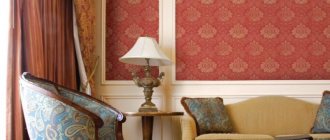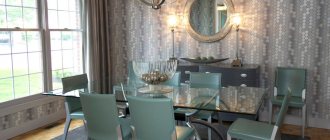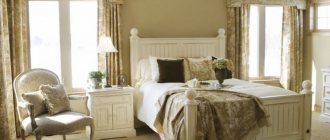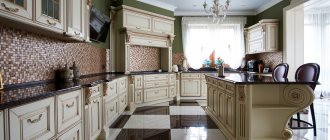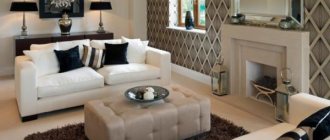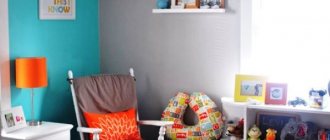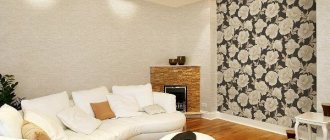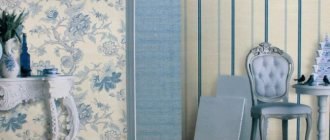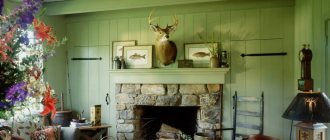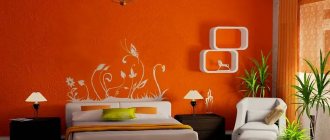Since ancient times, wallpaper has been used to decorate the homes of noble people. The nobility of Europe upholstered walls and ceilings with fabric. Then the name appeared. The popularity of paper wallpaper came from China and Japan in the century before last, where they have been traditional since antiquity. In the thirties of the twentieth century, polymer and other wallpapers were created. Nowadays, it is not difficult to buy high-quality building materials for any budget and design.
Today wallpaper is available and present in every home. They decorate, create comfort, and ensure hygiene of the home. They can significantly change the appearance of a room, lighting, and absorb unnecessary noise and sounds.
The production of paper, textile and vinyl wallpapers is widespread, which are smooth and embossed in type, embossed, profiled, velor, metallized, photo wallpaper and others.
Why do you need to choose a color?
Color styling is an important section of modern design. The functions performed by the color composition in the apartment are very diverse:
A combination of shades can either help with the visual expansion of space or aggravate the problem. For this reason, this issue should be approached carefully.
The color scheme affects a person’s psychological mood. A number of scientific works have proven the dependence of a person’s mood, performance and vigor on the color interior of the room.
Eye fatigue during a working day directly depends on the chosen shade. Since wallpaper takes up the largest area in terms of color, the choice of canvas should be conscious and practical for the owner.
Using combinations of wallpaper, you can zoning a room into several functional sections.
Not the last step is the question of room design. An irrational combination of colors is the basis of bad taste.
Factors influencing color choice
Designers or their practical advice can help with the optimal choice of shade for wallpaper.
There are a number of factors that should be taken into account when choosing a color composition:
Purpose of the room. The shades and colors for the dining area will be very different from the colors for the living room.
The degree of natural or artificial illumination. This factor is important in practice. For example, dazzling white wallpaper in a room with three wide windows is a completely impractical design approach.
Note!
- Wallpaper glue - 155 photos of the best compositions. Review of manufacturers and the best glue brands
- Wallpaper from Leroy Merlin: 180 photo examples and video master class on the use of different types of wallpaper
Wallpaper for the kitchen - types, types, designs and expert advice on choosing a design (165 photos + video)
The area of a specific room. It has long been known that the shade of wallpaper is used for the visual effect of expanding or narrowing space.
Interior style chosen by the apartment owner. Wallpaper and its design must be original in combination with the chosen design direction.
Color design of furniture, floors, ceilings and auxiliary accessories. The optimal combination of wallpaper color with the shade of the upholstery of the sofa, the façade of the furniture or stretch ceiling will create a unique style in the room.
It is also worth considering the owner’s personal preferences regarding the color scheme in the room.
Preparing the walls
In order not to be disappointed with the final result, you need to clearly know how to prepare walls for pasting. To treat the surface you will need a spray bottle with water, a spatula, and unnecessary rags.
To remove the old layer of wallpaper, you need to spray it on it and wait until the canvas gets wet and begins to move away from the wall. To enhance the effect, use warm water and soap solution.
Then the canvases begin to be torn off with a spatula or knife. If the wallpaper comes off well, you can remove it by hand.
Gaps, cracks and unevenness may be hidden behind old layers. They must be removed with putty. Then the walls are plastered and primed.
After this treatment, it is better to transfer the pasting to the next day so that the applied layers dry thoroughly.
When decorating walls with non-woven and vinyl wallpaper, plaster and primer are usually not carried out. The thickness of the canvas allows you to hide minor surface defects.
Harmonious color combination
It is not at all necessary to know all the compatible shades - it is enough to understand the principle of color combination. There are tones that are called neutral. These colors go well with all other tones:
- All shades of white. White wallpaper is most often used in combination with black inserts or as an independent tone for a classic design style.
- Beige tone (all colors of beige paints).
- Gray tone. Gray wallpaper allows you to create a neutral background for additional decorative finishing.
- Brown shades. This background is warm and goes well with all representatives of cold tones.
Another situation arises when the interior already has certain colors, and it is necessary to choose the optimal tone for them:
- Green wallpaper will go well with natural shades of furniture (sand, brown or pale yellow).
- It is better to choose blue and purple tones of wallpaper for a yellow or white interior. Such combinations will not have a negative impact on a person’s psychological mood and will not hurt the eyes with bright contrasts.
One way to zone a room is to use wallpaper of two colors, the border between which represents the dividing line.
Note!
Types of wallpaper: features, pros and cons of wallpaper types. Classification by texture, number of layers, drawing (photo + video)
- Wallpaper for the apartment - TOP-150 photos and videos of wallpaper design options for the apartment. Variety of materials, textures, colors and wallpaper patterns
- Wallpaper for the bedroom: TOP 140 photos and video reviews of bedroom designs with wallpaper. Suitable styles, colors and patterns of wallpaper for the bedroom, choice of materials
To create a similar layout and not cause a sharp contrast, you can use wallpaper that differs from each other by 2-3 tones.
Wallpaper companions in the interior of an apartment
Companions are canvases that focus attention on the selected piece of furniture. Although they differ in appearance from the main ones, they are made in the same style, so they create an interesting contrast. The main purpose of such products is to diversify the decor of the room. Their advantages:
- the best option for zoning a room;
- a huge range of textures;
- the opportunity to diversify the interior or make it less colorful;
- easy to match to the main color, since companions are present in the collections of all manufacturers;
- you can adjust the visual perception of the width and length of the room.
Companion wallpaper is versatile and looks good in any room. For example, a bright texture will make a nursery appear brighter and more vibrant.
Finding companions is not difficult, since there are no strict criteria, only desire. However, if difficulties arise, you can use these recommendations on how to combine wallpapers with each other:
- classic version - canvases of the same color, but on the companion there is a pattern;
- combination of similar large and small patterns;
- the same pattern, but different colors;
- canvases of the same color, but slightly different in tones;
- European style - the same color and pattern, but different texture.
Photo wallpapers can also be considered companions. In this case, the background is chosen to be neutral and in harmony with the photograph.
Color scheme for the bedroom
For a bedroom, the optimal solution would be wallpaper in a neutral color:
- White tones.
- Beige tones.
- Wallpaper with small flowers on a natural background.
Natural shades create a calm mood, positive emotions, do not irritate the eyes, and do not cause fatigue.
As an original idea, you can highlight one of the walls with a rich color, for example, in the form of a large flower or a painting.
Color composition for children's
For a children's room, it is not advisable to use bright and toxic shades, which irritate and distract the child from doing homework, quiet games and sleep.
The best solutions would be the following color combinations:
- Pale pink shades with fairy-tale characters against the background (for girls).
- Beige and sand tones of wallpaper for a boy.
- Wallpaper in two colors for a shared children's room, which also serves as room zoning.
Photos of wallpaper in two colors in various variations are presented in practical design catalogs, where you can choose a suitable interior design idea.
Pastel shades
To create a romantic atmosphere in the bedroom, you can use delicate shades of blue, mint, lavender or pink. A soft, enveloping atmosphere in the bedroom will be supported by suitable accessories and lighting.
To create a unique interior, it is recommended to use designer items: original paintings, lamps, vases and floor lamps.
Choosing wallpaper for the living room
For this room, which is a guest area, bright colors and rich decor are preferred. The most daring decisions on color composition can be used in this room.
Furniture plays the main role in arranging the style of the living room, so the wallpaper should highlight the furniture design from the overall picture with its shades.
An excellent solution would be wallpaper in light yellow or sand tones with bright decorative patterns.
Color solutions for the dining area
The dining area, in contrast to the working kitchen section, is decorated with wallpaper. Color solutions mean highlighting one of the walls using a stencil design, intricate ornament or mosaic pattern.
For small rooms, use the lightest colors possible, which allow you to visually expand the room.
Optimally selected colors will help you create a beautiful and stylish interior in your apartment.
Features of small rooms
In fact, you can enlarge a small bedroom or living room only by combining it with an adjacent room, be it a balcony or another room. Unfortunately, it is not possible to create a stylish studio in every apartment (not all walls can be dismantled or even partially demolished). In addition to the “physical” increase in area, it can be designed in such a way that the space will seem larger and more spacious. This is just a design trick, an illusion, but it is precisely this that gives a person a feeling of comfort and coziness. Small rooms often have a whole bunch of shortcomings: non-standard shape, poor lighting, low ceilings, window and door openings that are too large or too small.
Room geometry
Depending on the shape, rooms are classified into two types:
- Standard. Such rooms have a rectangular or square shape. In the first case, the length should not greatly exceed the width of the room, otherwise the narrow room will be classified in the second group of non-standard ones.
- Non-standard. The geometry of the rooms is distinguished by a large number of angles (pentagons, hexagons) or the presence of bay windows, niches, and projections that spoil the architecture of the room and make the space difficult to perceive.
If everything is more or less clear with the standard ones, then it is really difficult to smooth out the irregular geometry of the second type of rooms. To prevent the “irregularity” of the room from being noticeable, it is necessary to select suitable finishing materials. For such rooms, wallpaper in light shades without patterns or prints is more suitable - a classic win-win option that is difficult to go wrong with. This does not mean that you will have to give up design experiments. You can revive the surface of the walls after repairs during decoration using panels, paintings or photographs in frames. Fake decorative round and semicircular arches made of plasterboard will help smooth out the corners. Angular furniture is replaced with unusual ones with smooth lines and mirrored facades.
Illumination
Small rooms, as a rule, have equally small windows. They do not provide the room with the natural light it needs. This oversight can be corrected with the help of artificial light sources, light wallpaper, and mirror surfaces. To make the room lighter and “warmer,” use combinations of pastel shades and brown, white, pink, and peach. A stylish and unusual solution would be to buy wallpaper with a special coating - mineral coating (quartz chips are ideal).
